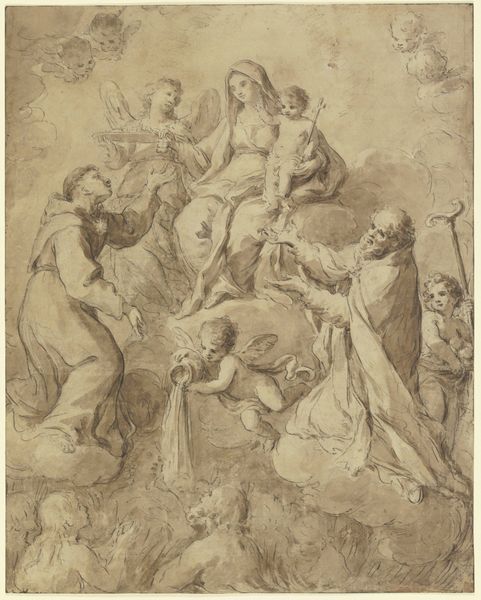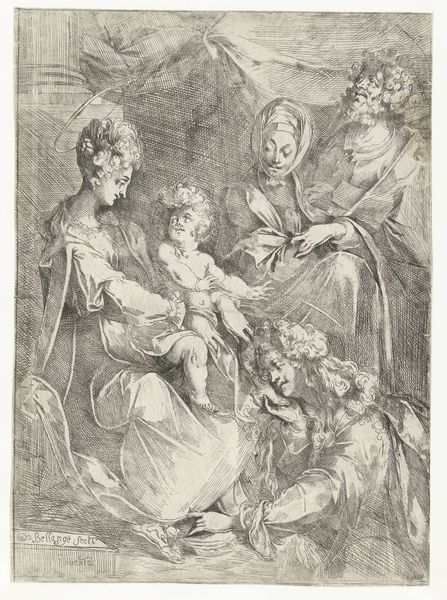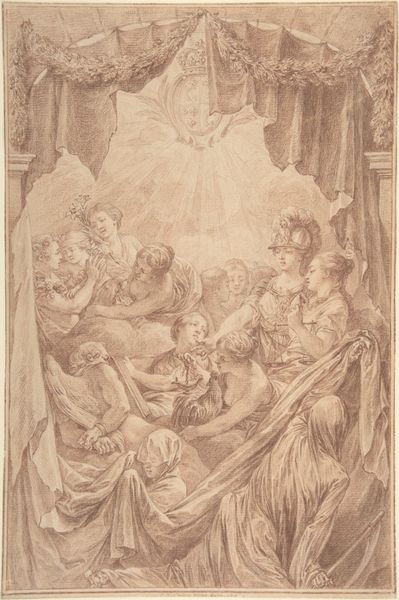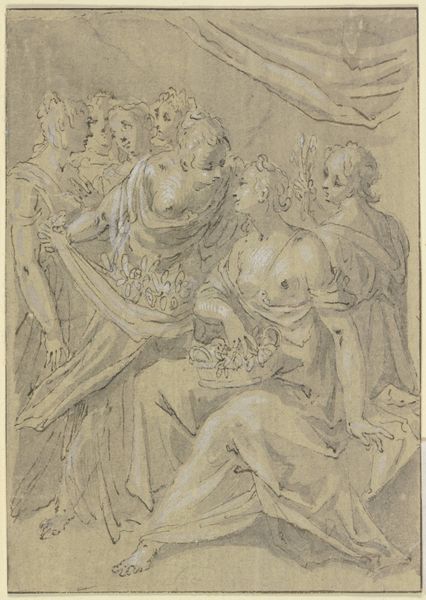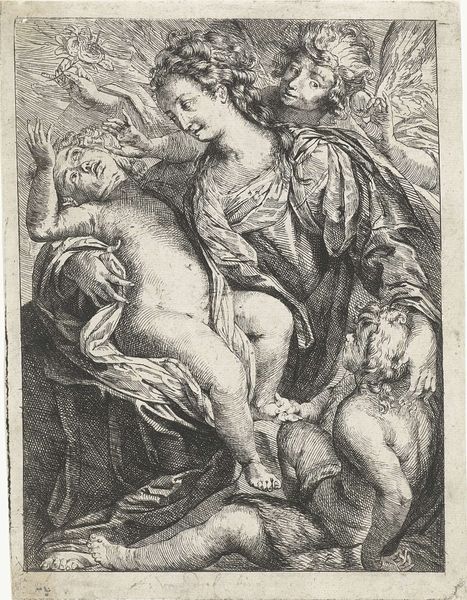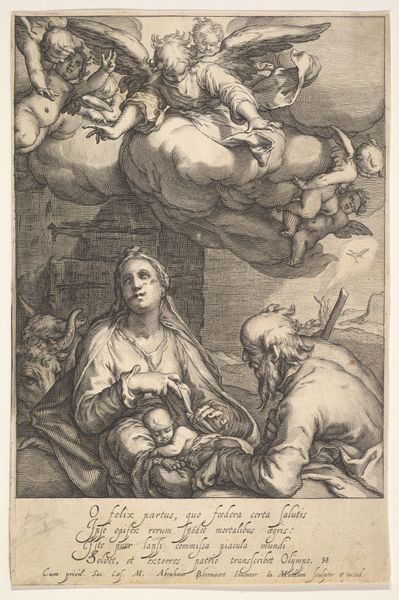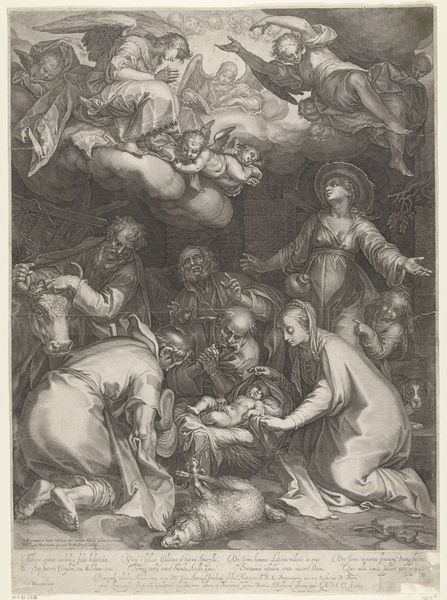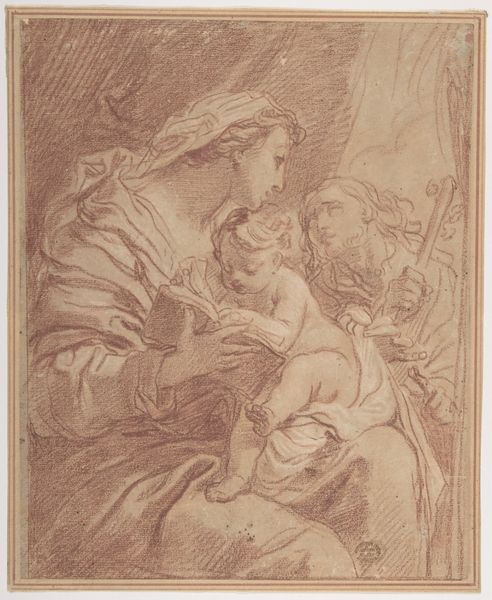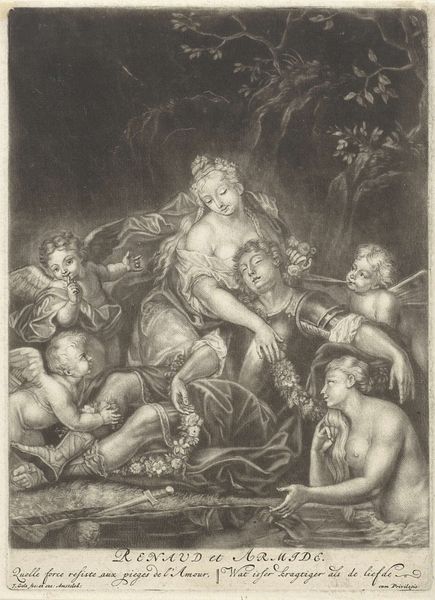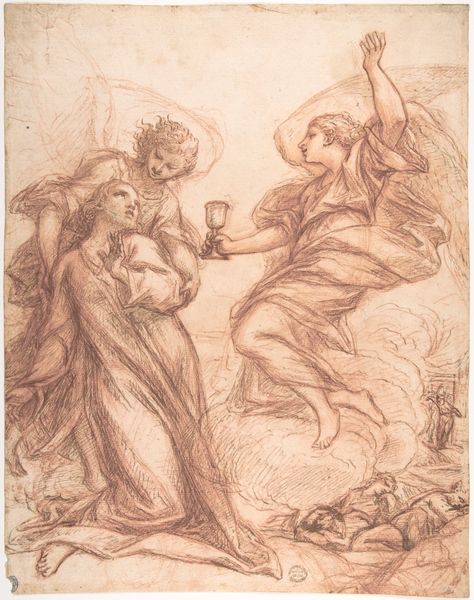
drawing, tempera, pencil
#
portrait
#
drawing
#
narrative-art
#
tempera
#
pencil sketch
#
figuration
#
11_renaissance
#
pencil
#
history-painting
#
academic-art
#
italian-renaissance
#
watercolor
Dimensions: height 293 mm, width 209 mm
Copyright: Rijks Museum: Open Domain
Curator: Here we have Federico Barocci's "Adoration of the Magi," dating from between 1545 and 1612, residing here at the Rijksmuseum. What’s your initial take on it? Editor: It's… interesting. The color palette gives it a muted, almost ghostly feel. The lines are loose, expressive. A sense of tenderness, but also unfinished tension permeates the scene. Curator: That tension comes perhaps from it being a drawing – likely a preparatory sketch using pencil and tempera for a larger painting. Think about the material practice here. Barocci’s exploration of composition through numerous sketches before committing to a final painting speaks to a highly developed craft. Editor: Right. And that leads me to think about the social context of the image. The subject matter itself, the Adoration, positions Mary and the Christ child at the center of a global exchange. Wise men, presumably from different corners of the earth, offering precious, likely trafficked, resources. What does that narrative imply about power dynamics, both then and now? Curator: Good point. We need to remember that these materials – gold, precious stones – come from exploited lands and often, enslaved labor. And by representing them as gifts, Barocci inadvertently highlights the networks of global exchange driven by unequal power relations. Editor: It complicates the supposed purity of the religious narrative, doesn't it? Even this sketch, with its academic style, speaks to the patronage system. Who commissioned it, and for what purpose? These figures weren’t just born from the artist’s mind – their representations are tied to societal expectations of idealized beauty and piety. Curator: True. But don't dismiss the artist's labor either. Pencil and tempera require skill to master. There is evidence of complex studio practices being employed during this era which adds to our overall understanding of this kind of artwork. Editor: Definitely, but it's vital to keep in view the structures that support these studios. Labor isn't performed in a vacuum. It's influenced and shaped by gender, class, race, and so on. Thinking of artistic work as pure expression overlooks those formative social conditions. Curator: These initial sketches allowed Barocci the flexibility to plan on a very tactile level and create the basis for works we can study today. It gives great insight into the planning stages of the art production itself, wouldn't you agree? Editor: I do agree, understanding all those elements of art production creates a more nuanced perspective about how visual art shapes societal concepts of what constitutes virtue, devotion, and value.
Comments
rijksmuseum about 2 years ago
⋮
This drawing clearly reveals the artist’s working process. He first made a quick sketch, subsequently working out the depiction with pen and brown ink. Barocci was not pleased with the result and changed the position of the standing king's head three times. He then modelled the figures with opaque white, so that the group emerges as a relief from the blue background.
Join the conversation
Join millions of artists and users on Artera today and experience the ultimate creative platform.

